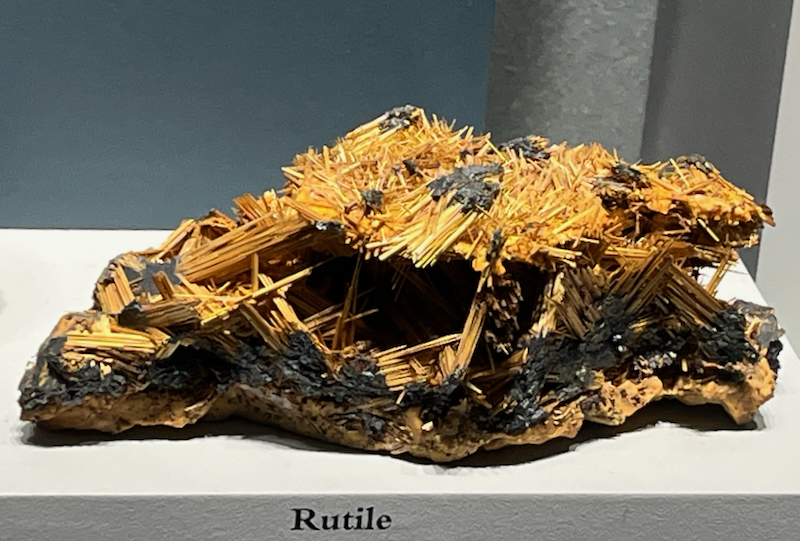Rutile
Rutile is one of the few titanium-based minerals you can find. Titanium is a metal that’s strong but lightweight and can be used to replace steel or aluminum. On the other hand, one titanium-based mineral, titanium dioxide, can be ground up and used to make super white paint. You won’t find white rutile though; joining a pretty large group of red-name minerals, rutile’s name is based on the Latin word for “reddish.” You can certainly find red rutile if you look hard enough, but most of the time when you see it, it will be gold colored, because it seems that gold rutile makes for the most impressive specimens. You may have noticed how common quartz is. Well, the most common occurrence of rutile is actually inside quartz crystals! Rutile has this habit of growing inside of other crystals—it’s very sneaky. When it does so, it’s usually a spray of thin needles, or sometimes a random pile of them, that look frozen in place. If it occurs that way, they say that the mineral it’s inside of is “rutilated,” and sometimes, if the rutilation is super thin, it can cause a cat’s eye effect. Fortunately, rutilation is not a bad thing—it usually makes the mineral specimen more interesting and a little more valuable. You can also find golden sprays of the mineral that are not encased in another mineral, and they look kind of like golden sunbeams.
| Formula | Group or Type | Shape | Hardness | Specific Gravity | Streak | Luster |
|---|---|---|---|---|---|---|
| TiO2 | — | Tetragonal | 6–6.5 | 4.2–4.3 | Red | Metallic to submetallic, or vitreous |


